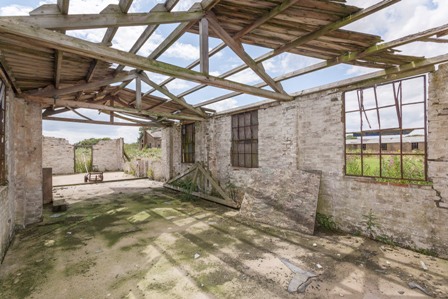
The Night Flying building is one of four Grade 11 listed buildings that will be renovated thanks to the £200K grant
Europe’s largest surviving World War I Aerodrome – Stow Maries near Maldon in Essex, is set to benefit from a £200,000 grant towards restoring and repairing four buildings at the First World War airfield, from a fund of almost £1 million that helps to save important heritage sites.
Now in its fifth year, the grant – awarded by not-for-profit business WREN – is part of a national Heritage Fund that funds the repair, maintenance or restoration of a building or structure of historic or architectural importance.
Stow Maries Great War Aerodrome was built in 1916 as a base for the Royal Flying Corps, a precursor to the RAF. The site was instrumental in defending London from the threat of German Zeppelin airships and Gotha bombers, but in 1919 it stopped being used by the military and for the next almost 100 years the site returned to agricultural use.
A few years ago the aerodrome and tumbledown buildings were saved from redevelopment by local people. Twenty-four buildings survive and today they comprise one of only a few near-complete First World War airfields anywhere in Europe.
The Stow Maries Great War Aerodrome Ltd, a charitable trust, was set up to raise funds to buy the site, restore it and open it up to the public. WREN’s grant – one of the largest ever awarded from the Heritage Fund - will focus on the priority restoration and repair of four of the key buildings namely the Royal Engineers' Workshop, the Night Flying Store, the Pilots' Ready Room and the Motor Transport workshop.
Jeremy Lucas, chairman of the Stow Maries Great War Aerodrome Trust, said: "The Trustees of Stow Maries Great War Aerodrome are absolutely delighted that WREN has offered us such a generous grant towards the repair and restoration of some of the Buildings at Risk within this unique historic site. Supplemented by a further grant from English Heritage, this will enable us to make an early start on extending the already breathtaking visitor experience of understanding something of what life was like for the pioneers of wartime aviation during the First World War.
We shall be working with our partners to seek funding for the internal fitting out of these structures, once they are again safe and weatherproof, so that we can tell even more of the extraordinary story of the work which was done to try to protect London from air attack during the latter half of the Great War. We are extremely grateful to the Board of Directors at WREN for this opportunity and to English Heritage for helping to make it possible."